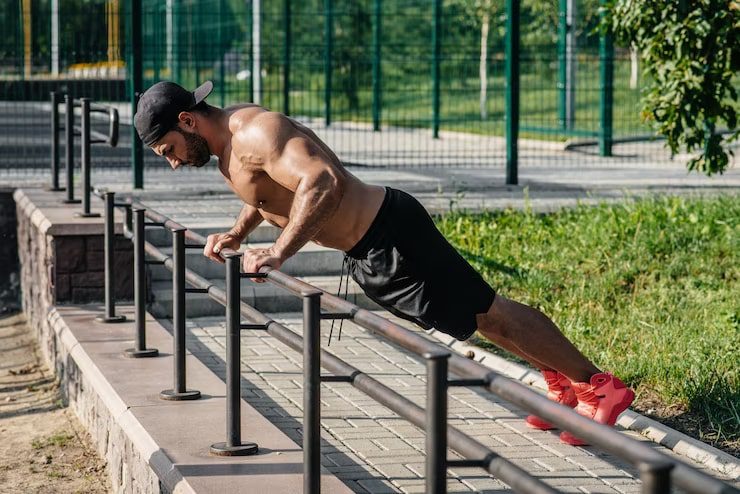Cross-training is no longer just a buzzword in the fitness community; it’s a game-changer for athletes looking to elevate their performance, prevent injuries, and stay mentally fresh. Whether you’re a runner, cyclist, or gym enthusiast, incorporating cross-training exercises into your routine can take your training to the next level. In this blog, we’ll dive into the top benefits of cross-training and why every athlete should make it a staple in their regimen.
Injury Prevention
One of the biggest benefits of cross-training exercises is injury prevention. Repetitive movements, like running or cycling, can put a strain on specific muscle groups, leading to overuse injuries. Cross-training allows athletes to work out different muscles, giving their primary muscles a break while building strength in other areas.
A study published in Sports Medicine shows that 60% of athletes who cross-train experience fewer injuries compared to those who focus on just one activity. By mixing it up, you reduce the risk of burnout and overuse injuries, keeping you in the game longer.
Improved Overall Fitness
Cross-training exercises help improve overall fitness by working on all the key elements: strength, flexibility, endurance, and agility. For instance, a runner who includes swimming or cycling in their routine will notice a significant improvement in cardiovascular endurance. Similarly, a weightlifter who incorporates yoga will benefit from increased flexibility and balance.
Integrating different types of training enhances your overall athleticism. Think about it: pro athletes like LeBron James and Serena Williams swear by cross-training. Why? Because it makes them more well-rounded and adaptable to various physical demands. Adding different forms of exercise to your routine will push your body in new ways, resulting in superior performance.
Mental Refresh
Training for the same sport day in and day out can lead to mental fatigue. We’ve all been there—when your regular workouts start feeling like a chore. Cross-training adds variety to your regimen, helping you stay motivated and engaged. The excitement of learning a new skill or trying out a different workout routine, like kickboxing or Pilates, can reignite your passion for training.
Psychologists often emphasize the importance of variety in keeping the mind sharp and engaged. According to a survey from the American College of Sports Medicine, 40% of athletes report feeling mentally refreshed and more motivated after incorporating cross-training exercises into their routine.
Enhanced Performance
Cross-training isn’t just about injury prevention it also boosts performance in your primary sport. For example, runners who incorporate strength training and cycling often report faster times and greater endurance. Strengthening muscles that don’t get as much attention in your usual training helps improve overall power and stamina.
Professional athletes have long recognized this. Swimmers like Michael Phelps incorporate weightlifting and cardio into their swimming routines to ensure peak performance. Studies indicate that athletes who engage in cross-training exercises improve their performance by up to 15% in their primary sport. That’s a solid edge when it comes to competition.
Better Recovery
Recovery is a critical aspect of any athlete’s training program. Cross-training allows you to stay active while promoting recovery by reducing the intensity or changing the focus of your workout. For instance, if you’re recovering from a leg injury, you can opt for swimming or upper-body-focused exercises. This way, you maintain fitness balance without risking re-injury.
Low-impact cross-training exercises like swimming, cycling, and yoga are ideal for active recovery, allowing your body to heal while keeping you in top form. 50% of athletes in recovery programs report better outcomes when they engage in alternative training routines, according to research from The Journal of Sports Science & Medicine.
Increased Flexibility and Mobility
Incorporating activities like yoga or Pilates into your cross-training routine can do wonders for your flexibility and mobility. As athletes age, flexibility becomes increasingly important for maintaining good form and avoiding injury. Cross-training exercises that focus on stretching and joint mobility help ensure that athletes maintain a full range of motion in their sport.
For example, weightlifters often have tight muscles due to the repetitive nature of lifting heavy loads. Adding yoga to their training helps loosen tight muscles, making movements smoother and reducing the risk of injuries.
Conclusion
Incorporating cross-training exercises into your routine is a surefire way to boost your overall athletic performance, prevent injuries, and keep your mind engaged. Whether you’re a seasoned pro or just starting, the benefits are undeniable. By mixing up your training, you’ll unlock new levels of fitness, avoid burnout, and improve in ways you never thought possible. So, if you haven’t already, it’s time to shake things up—get out there and cross-train your way to success!







